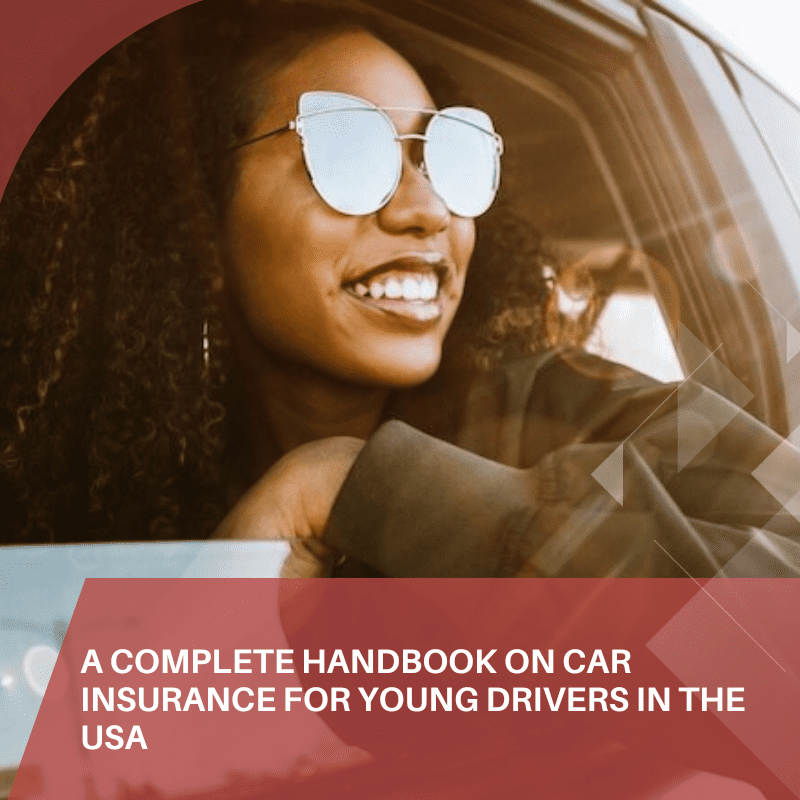Auto insurance is a crucial aspect of life for young drivers in the United States. This article delves into the world of auto insurance for young drivers and discusses the best available options. Whether you’re a parent assisting your teenager in finding coverage or a young driver seeking affordable and reliable insurance, this guide provides valuable insights.
Why is Auto Insurance Crucial for Young Drivers?
Auto insurance isn’t just a legal requirement in the United States; it’s also vital for the protection of young drivers. Statistics show that young drivers are more susceptible to accidents due to their limited experience on the road. The right insurance policy ensures that they are financially safeguarded in the event of an unfortunate accident.
Factors to Consider When Choosing Insurance for Young Drivers
Coverage Types: There are various types of auto insurance coverage, each serving different purposes:
a. Liability Insurance: This is the minimum coverage required by law and covers damages and injuries caused to others in an accident.
b. Collision Insurance: It covers damages to your vehicle in case of a collision.
c. Comprehensive Insurance: This covers non-collision-related damages, such as theft, vandalism, and natural disasters.
d. Uninsured/Underinsured Motorist Coverage: This protects you if you’re in an accident with a driver who doesn’t have insurance or lacks sufficient coverage.
Premium Costs: Insurance costs for young drivers can be considerably higher due to their perceived higher risk. However, several strategies can help reduce these costs, such as:
a. Maintaining a good driving record.
b. Completing a defensive driving course.
c. Bundling insurance policies.
d. Choosing a higher deductible.
Discounts and Savings: Many insurance companies offer discounts tailored to young drivers, including good student discounts, safe driver discounts, and discounts for installing safety devices in your vehicle.
Customer Service and Reputation: When selecting an insurance company, consider their reputation and customer service. Look for reviews and ratings from other policyholders to ensure you’ll receive the support you need when filing a claim.
Best Insurance Options for Young Drivers in the United States
Now, let’s explore some of the best insurance providers for young drivers in the United States:
- Geico: Known for competitive rates and offering various discounts for young drivers, including good student discounts. They also provide a user-friendly online platform for policy management.
- Progressive: An excellent choice for young drivers, offering innovative programs like Snapshot, which tracks driving habits and can lead to significant discounts for safe driving.
- State Farm: One of the largest insurance providers in the United States, offering discounts for good students and safe drivers, along with excellent customer service.
- Allstate: Provides a variety of coverage options and offers a user-friendly mobile app to help young drivers manage their policies and track their driving habits.
- USAA (for military families): Offers affordable rates and excellent customer service to those affiliated with the military.
- Nationwide: Provides an impressive range of coverage options and offers discounts for young drivers who complete a defensive driving course.
- Erie Insurance: Known for competitive rates and personalized customer service, they offer good student discounts and a “Rate Lock” feature to stabilize premiums.
The Challenges Faced by Young Drivers
Young drivers encounter a unique set of challenges when securing auto insurance:
- High Premiums: Due to their inexperience, young drivers are often considered high-risk, resulting in higher premium costs that can be a financial burden.
- Lack of Driving History: Insurance companies consider driving history when determining premiums. Young drivers typically lack a substantial driving history, which can lead to higher premiums.
- Choice of Vehicle: The type of vehicle a young driver selects can impact their insurance rates. High-performance or luxury cars often come with higher insurance costs.
- Driving Habits: Risky behaviors, such as speeding or texting while driving, are more common among young drivers, leading to an increased risk of accidents and higher insurance costs.
Strategies to Reduce Insurance Costs for Young Drivers
Despite these challenges, young drivers can employ strategies to reduce insurance costs:
- Good Student Discounts: Maintaining good grades can lead to discounts, encouraging responsible behavior both in school and on the road.
- Defensive Driving Courses: Completing a defensive driving course demonstrates commitment to safe driving, which some insurers reward with lower premiums.
- Bundling Policies: Combining auto insurance with other policies, such as renters or homeowners insurance, can result in significant savings.
- Telematics Programs: Some insurers offer telematics programs that track driving habits and offer discounts for safe driving.
- Choose the Right Vehicle: Opting for a safer, more modest vehicle can lead to lower insurance costs.
How to Compare Insurance Quotes
To find the best insurance for young drivers, follow these steps:
- Gather Your Information: Ensure you have all the necessary information on hand, including personal details, driving history, vehicle information, and relevant discounts.
- Research Insurance Providers: Look for reputable providers known for fair rates and excellent customer service.
- Get Multiple Quotes: Request quotes from several insurers, providing accurate information for precise quotes.
- Compare Coverages: Don’t focus solely on price; compare the coverage each policy offers to ensure it meets your needs.
- Consider Customer Service: Read reviews and gather feedback to gauge the quality of customer service provided by each insurer.
- Ask About Discounts: Inquire about available discounts and programs tailored to young drivers.
Maintaining a Good Driving Record
Young drivers can benefit from maintaining a clean driving record by avoiding traffic violations and accidents. As experience grows, insurance premiums are likely to decrease. Some insurers offer accident forgiveness programs that prevent rate increases after the first at-fault accident.
